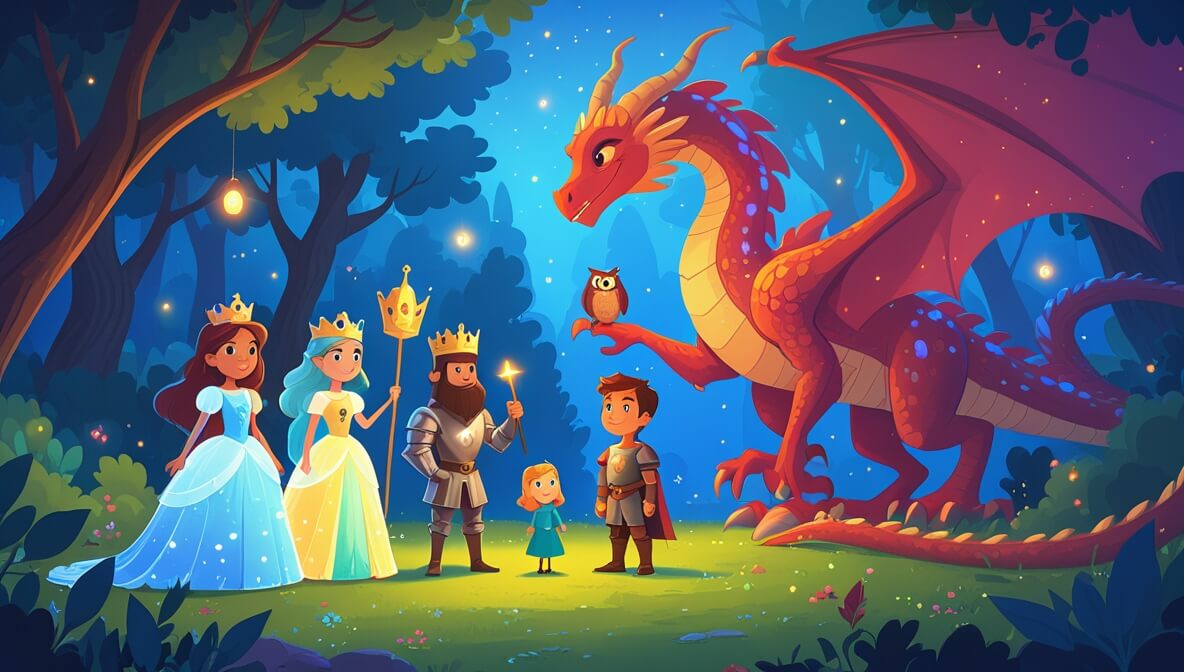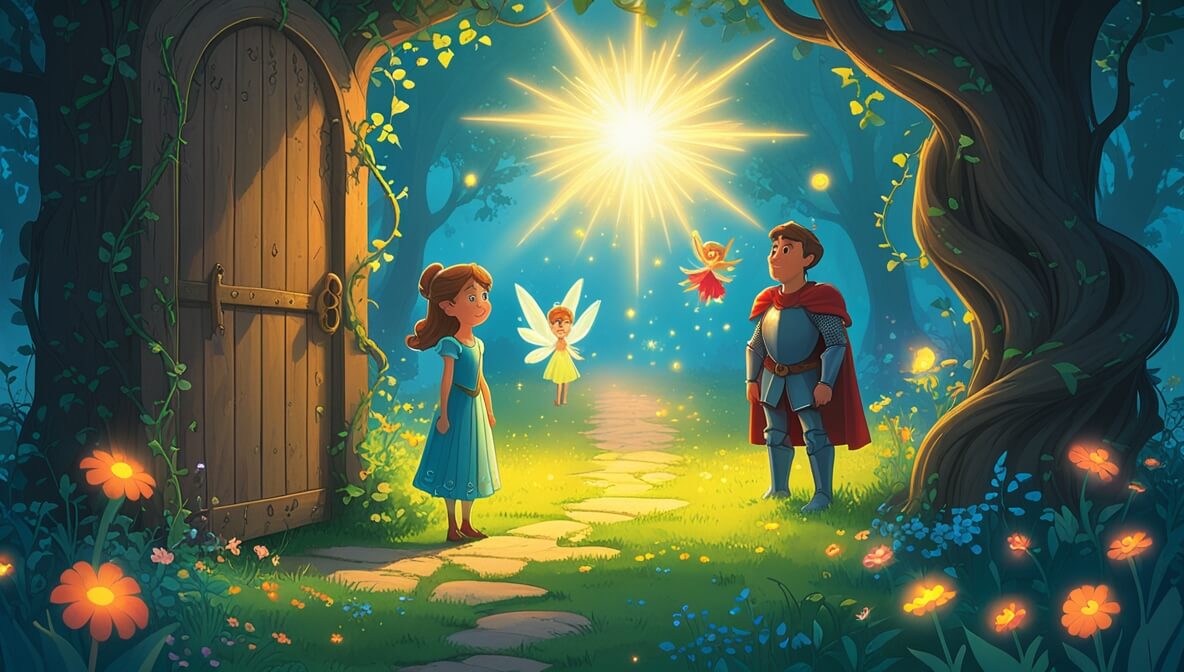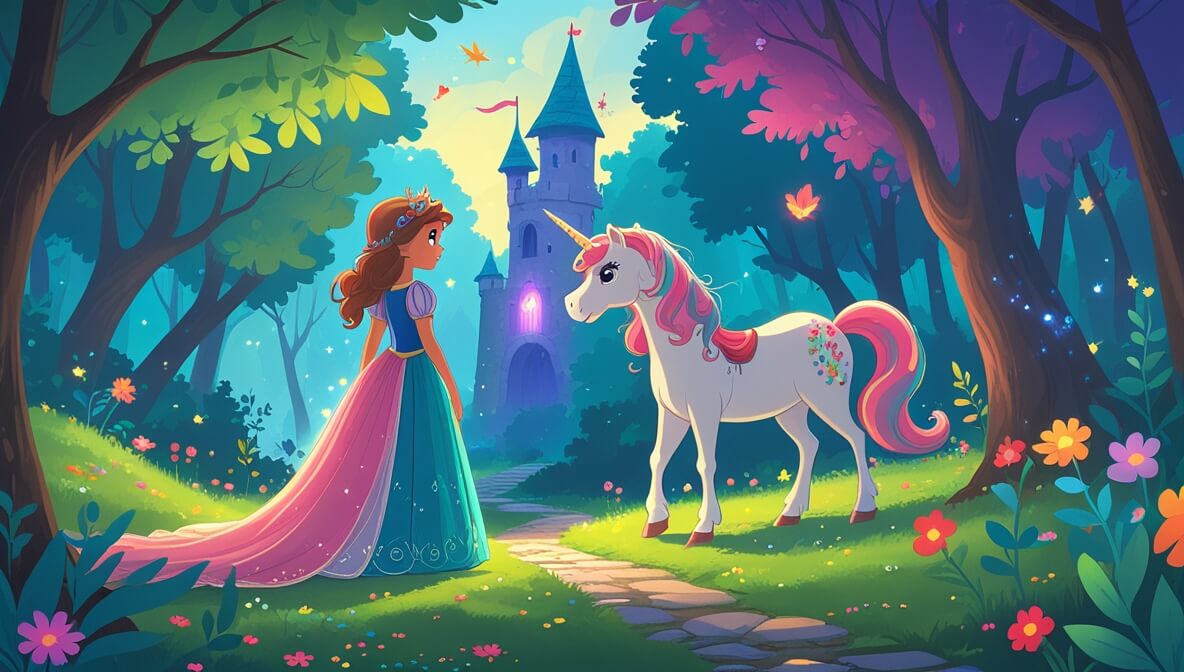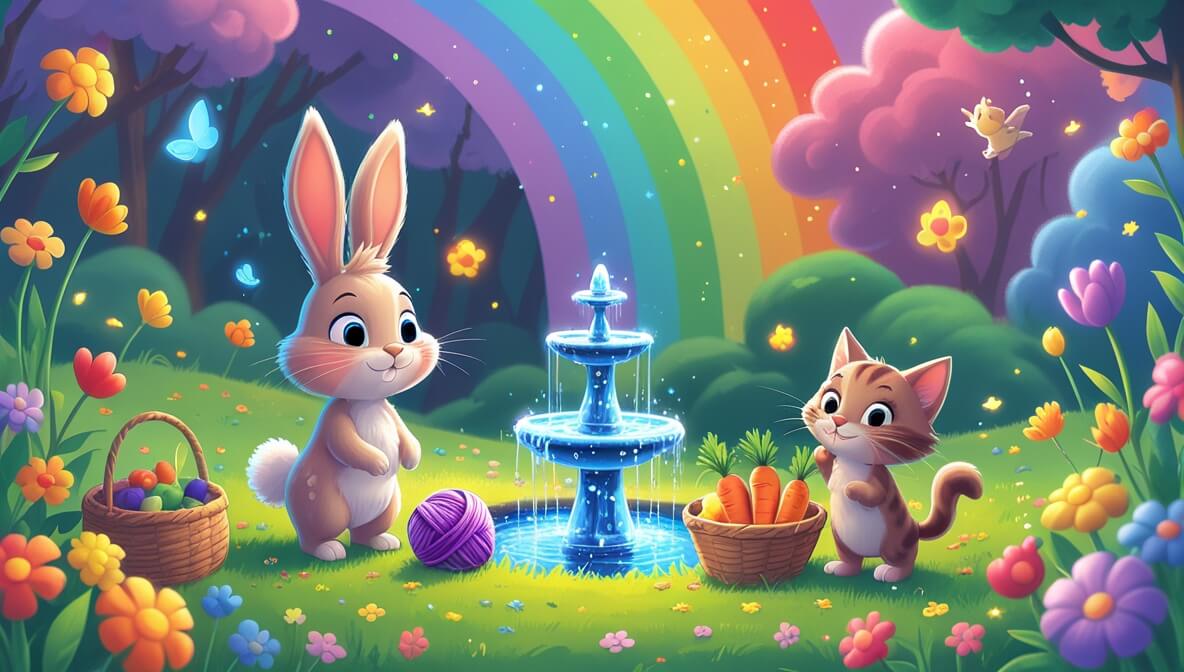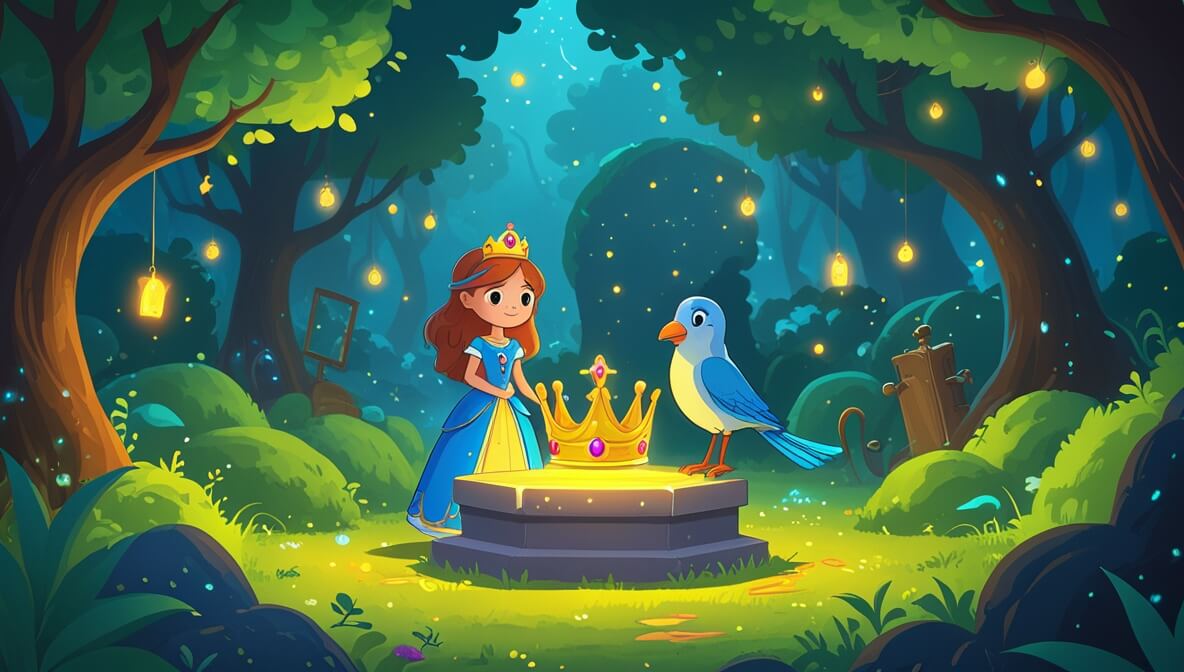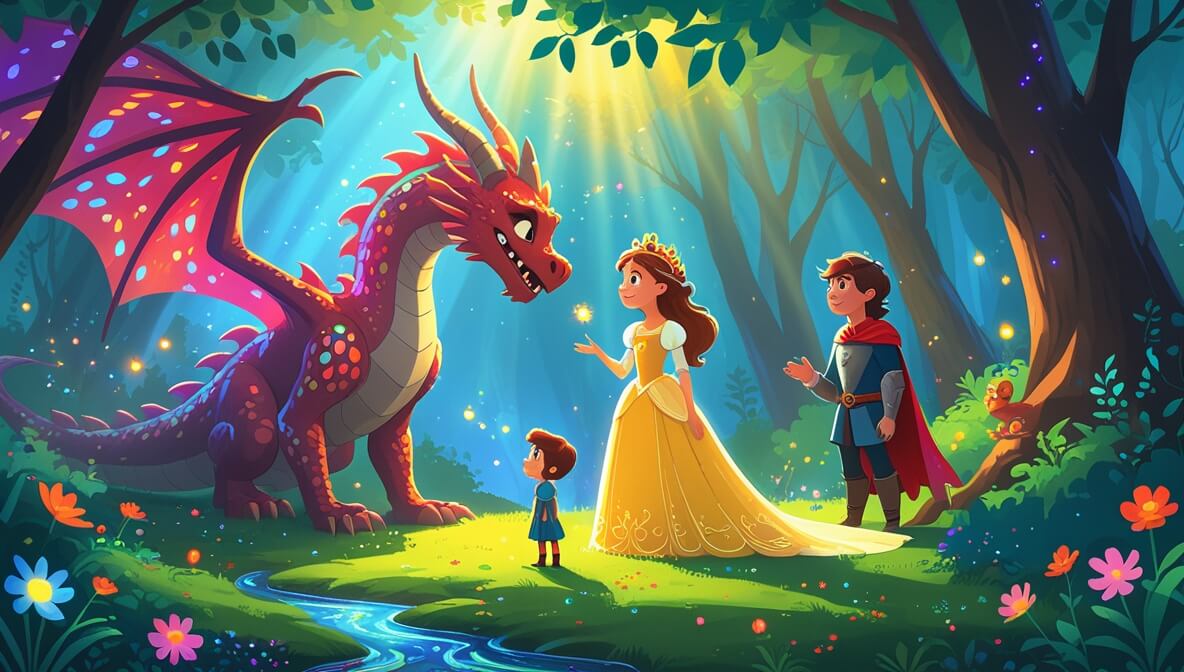A brave princess embarks on a magical adventure to break a spell that has cast her kingdom into eternal night. Along the way, she discovers the importance of friendship and courage.
Age Recommendation
3 – 12 years
Characters
Characters:
- Princess Mirabelle (a daring and kind-hearted princess)
- King Orion (the wise ruler of the kingdom)
- Sorceress Drisella (the mischievous sorceress who cast the spell)
- Sir Cedric (a brave knight and loyal friend)
- Luna (a magical talking owl)
Story
Once upon a time, in the kingdom of Lumina, there lay a secret that threatened its peace. The land was plunged into eternal night by a spell cast by the mischievous Sorceress Drisella. She did this out of envy, for she wanted the stars to herself. Princess Mirabelle knew she had to act quickly, or her kingdom would never see the sun again.
The Quest Begins
With her father, King Orion, guiding her, Princess Mirabelle set out on a quest to find the Golden Lantern, an ancient artifact said to break any spell. She was not alone; by her side was Sir Cedric, a knight with a heart as strong as steel, and Luna, a magical talking owl who knew the secrets of the forest.
The Enchanted Forest
As they entered the enchanted forest, Luna led the way with her luminous feathers glowing in the dark. “Follow me, Princess,” she hooted, “the forest is alive with magic.” They encountered curious creatures and heard the rustling whispers of ancient trees. A path of shimmering stones pointed them towards the heart of the forest.
The Sorceress’s Challenge
At the forest’s heart, Sorceress Drisella awaited them. “You seek the Golden Lantern,” she cackled, “but first, you must solve my riddle.” With courage, Mirabelle stepped forward and listened carefully. “What is it that you can catch but not throw?” Drisella asked with a gleam in her eye.
Mirabelle pondered, then confidently said, “A cold!” The sorceress, surprised by the princess’s wit, grudgingly allowed them to pass, but not without a warning. “Beware, the lantern is guarded by a dragon!”
The Dragon’s First Roar
As they approached the dragon’s lair, a mighty roar echoed through the valley. The dragon, though fierce, was not evil; it was under a spell of its own. With Sir Cedric’s bravery and Luna’s guidance, they convinced the dragon of their good intentions. “We seek to restore balance,” Mirabelle explained, “and free both you and our kingdom.”
The Golden Lantern
Moved by their sincerity, the dragon revealed the Golden Lantern hidden beneath his hoard of treasures. With a gentle breath, he lit the lantern with his fiery flame. The light was blinding, and as it spread throughout the land, the spell was broken. The sun rose for the first time in weeks, bathing Lumina in a warm, golden glow.
Homecoming
With the kingdom restored, Mirabelle, Sir Cedric, and Luna returned as heroes. King Orion welcomed them with pride. “You have brought back the light, Mirabelle,” he said, “not just to our kingdom, but to our hearts.” The people of Lumina celebrated, and even Sorceress Drisella, touched by the princess’s kindness, vowed to use her magic for good.
The end.
Moral of the Story
The story teaches that courage and kindness can overcome even the darkest of challenges. Friendship and understanding are powerful tools that can transform enemies into allies.
Questions to Think About
- What would you do if your kingdom was in danger?
- How did Princess Mirabelle show bravery during her quest?
- Why do you think Sorceress Drisella changed her ways?
- What role did Luna the owl play in the story?
- How can kindness turn someone from bad to good?
Do You Know
- Owls are often seen as wise creatures in stories because they can see in the dark and are very observant.
- Lanterns have been used for centuries to light the way during the night.
Word Explorer
- Enchanted: Filled with magic or made to be magical.
- Artifact: An object made by a human being, typically one of cultural or historical interest.
- Spell: A set of words that have magical powers.
Emotions in the Story
- Bravery: Felt by Princess Mirabelle when she decided to face the dangers of the enchanted forest.
- Fear: Experienced by Sir Cedric when they first heard the dragon’s roar.
- Joy: Felt by the entire kingdom when the sun rose again after the spell was broken.
Color Your Scene
Imagine the moment when the dragon lit the Golden Lantern with its fiery breath. Picture the golden glow spreading over the valley, bringing the sun back to the kingdom. Use bright yellows and oranges for the sunrise and deep greens for the forest.
Parents’ Corner
This story is a wonderful way to discuss the importance of:
Courage: Encourage your child to talk about times they’ve been brave, no matter how small the situation.
Empathy: Teach them to understand and share the feelings of others, just like Princess Mirabelle did with her friends and even the sorceress.
Problem-solving: Highlight how the characters worked together to solve challenges and the riddles they faced on their journey.
Forgiveness: Discuss how forgiving Sorceress Drisella helped to change her for the better.

